Last time I wrote about Yawgmoth we lived in a simple world. One without The One Ring, Orcish Bowmasters or Preordain. Yawgmoth has adapted and importantly gotten some huge upgrades. In this article I will go over Orcish Bowmasters and Delighted Halfling in the deck, the debate between The One Ring and Elven Chorus, and I will also go over a new card that is changing the way Yawgmoth operates as a whole, Agatha’s Soul Cauldron.


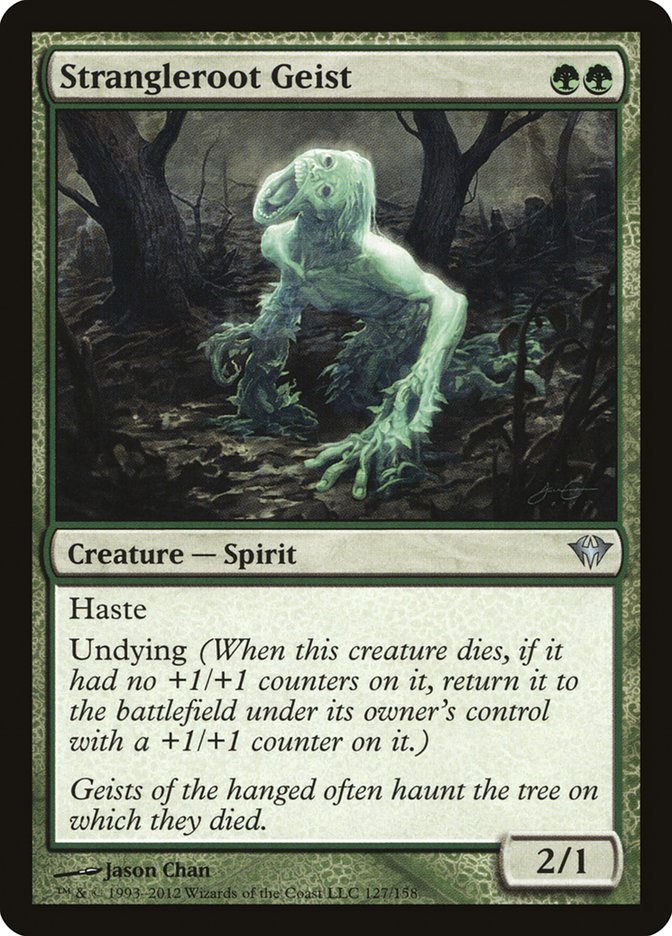
Orcish Bowmasters
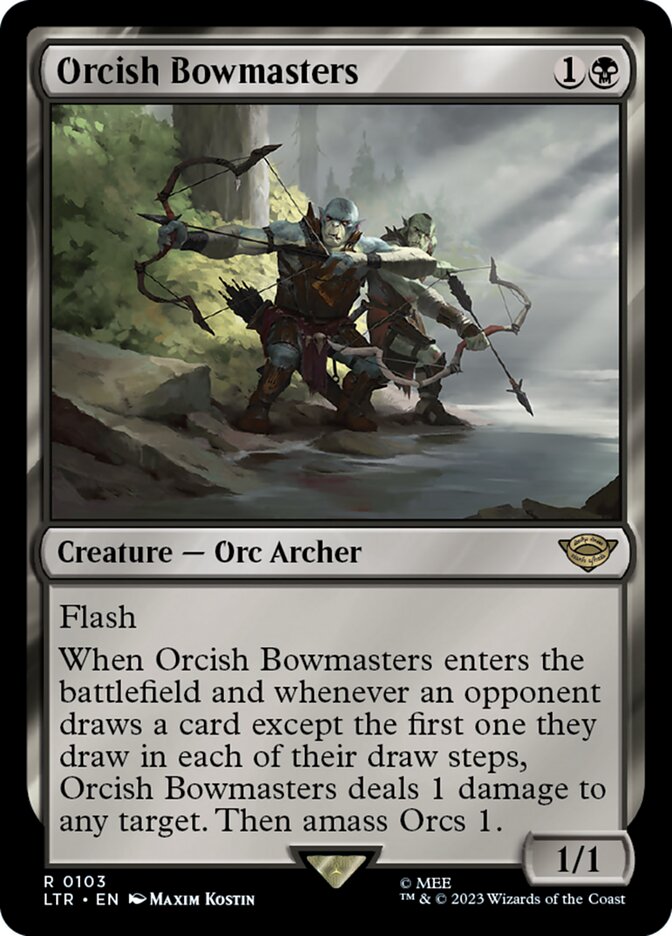
To start off, Orcish Bowmasters is an amazing new card from Lord of the Rings: Tales of Middle-Earth that heavily punishes opponents for drawing cards outside of their drawstep. At it’s base level it is two creatures for two mana that also pings any target. A ping can kill Ragavan, Dragon’s Rage Channeler, or Esper Sentinel. Bowmasters having flash means it often can be played in response to an opponent drawing a card from Preordain, Consider and the like, making it, frankly, an absurd card. However, these previous examples consider Bowmasters at its minimum and this card is not often played at it’s minimum. Bowmaster when triggered multiple times can kill multiple creatures while growing an Orc Army to very formidable sizes. Amass with a Yawgmoth means you can continuously create new 1/1s instead of growing your amass token. In games where one large creature is not the necessary threat, Yawgmoth’s ability can shrink or kill your opponents entire board. This trick involves responding to the Bowmaster trigger and sacrificing your Army token each time to draw a card and put a counter on something. For example, if your Rhinos opponent plays a Lorien Revealed, instead of creating a 4/4 token (which is not bad against a deck filled with 4/4 tramplers) you can respond to each of the three bowmaster triggers and sac your 1/1 every time to put a -1/-1 counter on something. This in addition to the pings from Bowmaster can allow you to kill multiple creatures or if the -1/-1 counters are spread out activating Yawgmoth’s proliferate ability can wipe a board in it’s entirety. As a last couple notes on Bowmasters utility, it is essentially free with chord of calling as it costs two mana, but the two creatures can be used to convoke Chord of Calling and if you need an additional untapped creature for chord and your opponent draws an extra card you can sac your preexisting amass token to create a new and untapped 1/1 Orc and then Chord.
Delighted Halfling
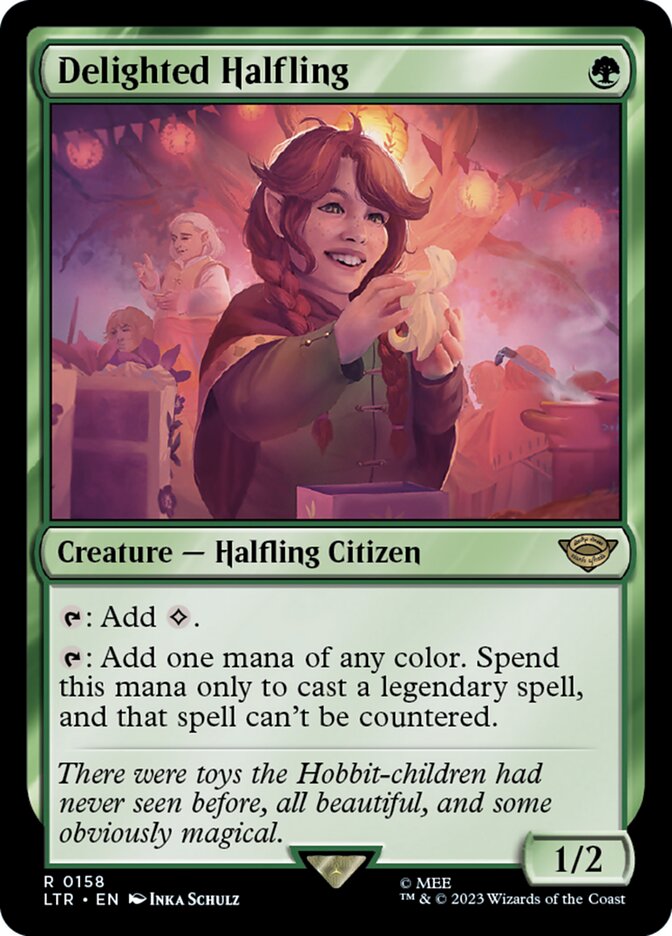
The other substantial upgrade to the deck is Delighted Halfling. Halfling is great for two reasons, it has two toughness and it taps to make uncounterable mana for legendary spells. Two toughness means it can’t be pinged by Bowmasters or Wrenn and Six. Halfling having two toughness makes the deck significantly more resistant to Fury as before when you had two Birds of Paradise a Fury would kill both of them and likely one or two other creatures. Due to Halfling this is not necessarily the case anymore. A scammed Fury will still kill your entire board most of the time but that’s just a cost of playing a creature based combo-deck. The uncounterable mana from Halfling is very strong as it quite obviously makes cards like Counterspell bad against your Yawgmoths, Grists and Agatha’s Soul Cauldrons but also makes UR Murktide’s sideboarding more difficult because prior to halfling it was very easy for them to cut Bolt in favor of other cards. Now the threat of Halfling turning off their hand of counters makes it not such a simple swap.
The One Ring vs Elven Chorus
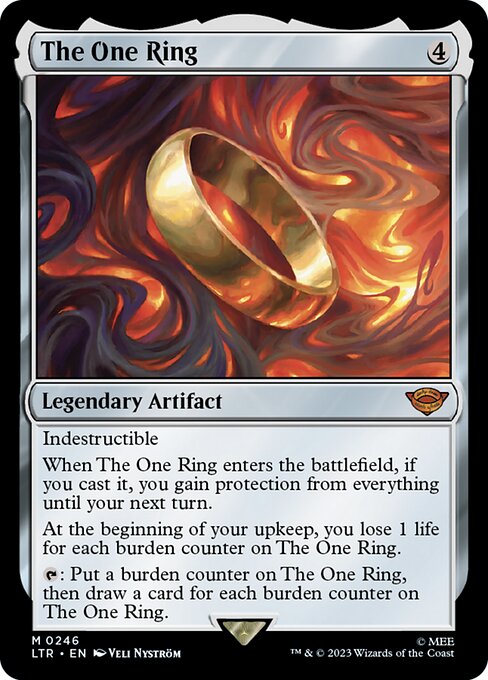
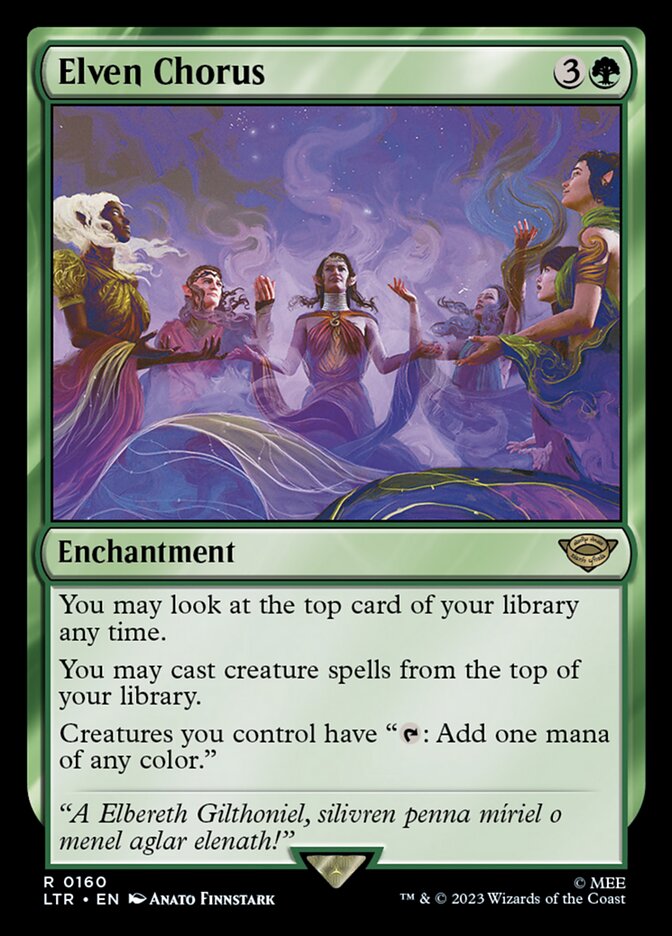
At the moment, a main point of contention in Yawgmoth sideboards is the argument for playing Elven Chorus over The One Ring. Both are incredibly strong 4-mana card advantage engines, cards perfect for a deck already built to take advantage of a 4-mana card advantage engine.
The One Ring is a good option as it will always draw you an increasing amount of cards and protect you for a turn but comes at the cost of life that adds up quickly in a deck that already uses life as a resource. It’s major downsides are the previously mentioned cost of life as well as the fact the entire meta is built around beating it. Orcish Bowmasters and Sheoldred are very commonplace and very good against The One Ring.
Elven Chorus is different but I’d argue equally as powerful. It generates equal amounts of card advantage and produces a major mana advantage, but comes at the cost of needing a board for it to be good. Chorus also produces much more immediate card advantage. With The One Ring you get a minimum of 1 card the turn it comes down. With Elven Chorus is often comes down and pays for itself then plays multiple cards from the top of the deck. Playing from the top also means that it is not hated on by Sheoldred or Bowmasters. Depending on your meta the two options serve similar purposes but advantage slightly different matchups. The One Ring is good against Rhinos as it can give the extra turn needed to survive, but Elven Chorus is better against Scam as it is very hard for them to remove and leaves you largely invulnerable to Thoughtsieze effects as most of your cards are coming off the top of the deck.
Agatha's Soul Cauldron
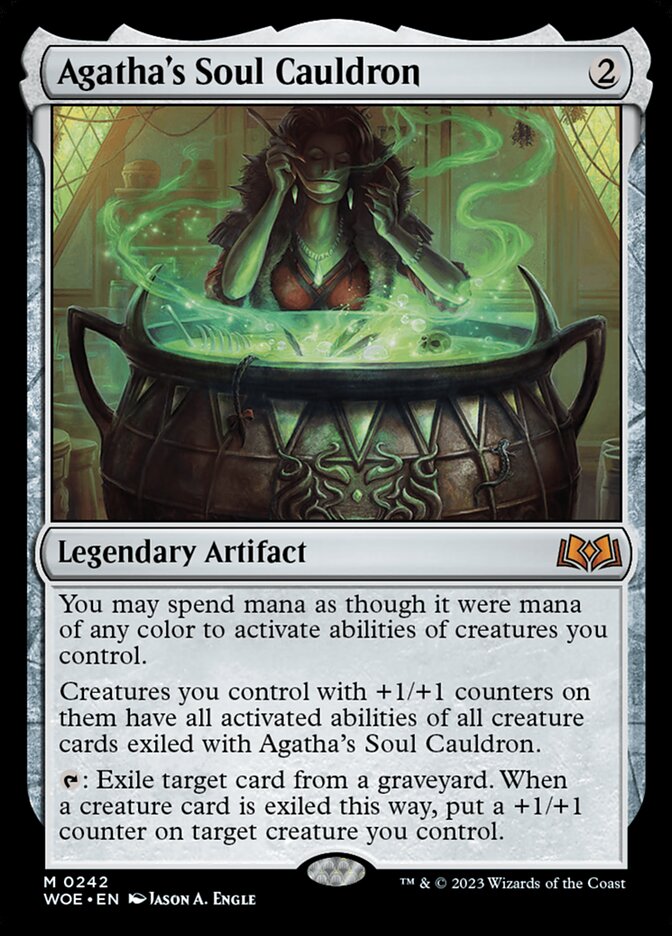
Now by far the most interesting card for the entire deck: Agatha’s Soul Cauldron. When this card was spoiled I doubted it would see play. Then I saw it in a challenge winning Yawgmoth list and decided to play it myself. My conclusion, this card is insanely busted. In my first league I didn’t even exile a Yawgmoth with it but it was absurdly powerful. The most powerful cards in your deck have activated abilities, turning your creatures into Wall of Roots, Hierarchs or Halflings will often pay for the Cauldron, turning all your creatures with counters into Yawgmoth is incredibly powerful and turning them all into Grists is obscene. Every line of the card is amazing. In Yawgmoth often black mana is a heavy constraint and restricts your ability to proliferate, but Cauldron’s text to allow you to use mana of any color makes his proliferate ability incredibly relevant. Wall of Roots’ ability to produce mana on both turns or Delighted Halflings colorless mana often go to waste, but such is not the case anymore as that mana goes straight into Yawgmoth’s Proliferate ability both pumping your own creatures that have counters (with Grist and Caudron it is now incredibly common to have creatures with loyalty counters so proliferate those too) and shrink your opponents creatures.
Cauldron also acting as an onboard trick to just add a +1/+1 counter at instant speed or turn off an opponents delirium is just very good. To maximize your usage of Cauldron something not very obvious you can do is to activate the proliferate ability of Yawgmoth discarding a valuable creature like Grist or a sideboard card and maintaining priority activate your Cauldron in response so you can get a counter on a creature then proliferate that counter as well as all your other ones.
In the beginning of the article I mentioned that Agatha’s Soul Cauldron is changing how the deck is constructed, Cauldron is warping deck and sideboard construction due to its immense power. Some Yawgmoth lists are now running maindeck Walking Ballista as a way to combo even easier with Yawgmoth making a Psuedo-Gerralf’s Messenger combo dealing a damage each time you pay a life as a Young Wolf with a counter can remove its own counter to ping your opponent, then be sacrificed again to get a counter and draw a card (rinse and repeat). The sideboard cards now being included are equally as awesome. Fulminator Mage was a card tested previously but served to be underpowered. It is not underpowered when every creature you control is a Fulminator Mage. Against Titan where many of their most important cards are non-basics it easy to get a Cauldron down with a Fulminator Mage and never let them untap with more than 1-2 lands (If they have any at all). Other cards like Spike Feeder represent both a powerful combo piece and a major amount of lifegain against aggresive decks. Turning your Young Wolfs and Geists into permablockers that also gain two life everytime they die is very good against decks like Burn or Prowess. Additionally, Haywire Mite was already a good card that saw play in Yawgmoth sideboards but now Cauldron can give all your creatures Mite’s ability.
Lastly, Cauldron is also just good maindeck graveyard hate. I touched on it earlier but restricting your opponents Delirium and graveyard size is very good against Murktide. Sniping creatures from yards against Living End makes an already strong matchup even better and being able to stop a late-game Scam from Rakdos Scam is incredible.
More than ever before I highly reccomend Yawgmoth. Every game presents so many hard choices that each one is riveting and feels so much more unique than any other deck in the meta. I know I’ll be taking Yawg w/ Cauldron to all my upcoming RCQs and if you aren’t deciding to bring it I’d be sure to sideboard correctly and bring an artifact hate card or two so you don’t die to the Cauldron.










